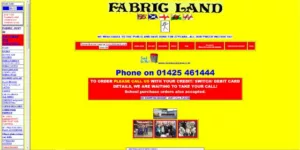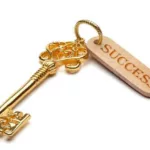If I told you I was going to buy a parcel of land in the middle of nowhere and put a garden shed on it, paint it orange, stick my name and email address on it and let people know that I was available for business, you’d think I was insane.
I could go on to argue that my parcel of land can be seen from Highway 680 between San Ramon and Dublin and I knew, for a fact, that some commuters driving by could be potential customers, you might still say, “Okay, but still, dude, it’s a shed in the middle of nowhere.”
If I said it was costing me $5 a month to maintain then you’d just say, “It’s your money. Whatever.”
And that’s what a website is for most people, the vast majority of businesses, in fact. I guess I shouldn’t be down on those kinds of sites the same way I shouldn’t be down on Vistaprint free business cards or people who use Microsoft clipart to create flyers or tri-fold brochures in Word.
Heck, it’s just a form of communication so, I’ll suck it up and accept that do it yourself flyers for a bake sale or your kid’s birthday party is fine. Doesn’t mean you can’t succeed with them in business, too, but they don’t communicate that well.
Your brochure website, that shed in the desert, is probably okay, too, but it definitely does nothing to communicate anything to anyone.
Now, if you are the world’s foremost authority on sesquipedalian Norwegian cuisine and you can make money from that then you really only need a single page with that information and Google is going to do the rest for you.
If, on the other hand, you have a rich set of services, you’re in a competitive market (ain’t we all), and you are looking to make an impression, a brochure site is not only ineffective but it is a detriment to your sales and marketing.
The web is a sharing and communicating kind of place. So, start with that. Putting up a flyer on the web isn’t doing much other than giving you a placeholder. It’s still a shed in the desert no matter how you choose to color it.
Furthermore, as people increasingly migrate to mobile usage, it becomes even more difficult to communicate your message with traditional methods. Now, someone’s gone and planted a copse of redwoods right in front of your shed.
You can’t communicate passively anymore.
In practice this means that the brochure website is not worth that much to you. It’s better to have a great Facebook page, a well thought out and connected LinkedIn presence, and an active involvement in the appropriate online communities. That’s really communicating online.
But, I would go a step further and say that you need to think more offline than online when you are online. Everyone is mobile. They don’t get the screen space, the time or have the same inclination to browse and “discover” you.
You need to get out there more. You need to get seen. On mobile.
Once you get them to see you, you need to get them to engage with you which in normal people speak means that you need to get their attention and get to know them. Build empathy. Both ways.
See where you connect and if there is an opportunity for you to be helpful to each other.
The web has gone mobile; mobile has made business development a giant worldwide cocktail party without the dazzling repartee, formal evening wear, and cigarette holders floating over a Martini glass.
It’s going to cost you more than that shed in the desert but it is going to require you to rethink how you connect with others for the sake of your business.
We talk and engage and do through apps. We have built very specific boundaries that allow us to control our environment by diving into the smallest screens around.
It’s neither good nor bad that typically you can look around you and see a group of people within inches of each other in an airport terminal, a waiting room, or bar, and they will be focused on their mobile devices.
It’s unlikely that we will reject this social change because it becomes more pronounced with newer generations.
So, our shed, we just need to let it go to pot, and we need to dress up nice, put on our happy faces, and go make friends through mobile presence.
I get it, not everyone needs to have an app, but it gets easier and easier to technically have one. It’s a mechanism, a means to an end. It is not the goal.
There was a time when what costs you $5 a month to build and maintain now would have cost you many thousands of dollars. Unfortunately, I can remember what it cost to get some simple HTML code put together for a website back in the mid-90s.
Apps are kind of in the same place, but rapidly becoming more accessible to all businesses.
For example, I am not sure why cab and livery companies are upset with Uber coming into their local markets when any cab company could create a much better, more targeted local car service app and out-Uber Uber or out-Lyft Lyft. The technology is not the gating factor here.
In fact, I don’t understand why we value these middlemen apps so highly because they are, like all middlemen, highly dispensable.
Why doesn’t Best Western build an Airbnb competitor merely by creating a process for individuals to become mini-franchisees? I want a room. I have an option of hotel, hostel, private, share etc. etc. and it is all endorsed by a company that I have familiarity of and some level of trust.
With services that promise local success the infrastructure for a worldwide operation may sound attractive, but I’d be happy if I had a monopoly on car services in the Los Angeles basin. I’d rather support a big local company than a giant multi-national.
That’s the empathy I’d have for a local company.
The great thing about mobile technology is that it is so great now. It’s frighteningly good. It beats the web experience for so much of what we want to do and need of the web.
It shouldn’t come as a surprise that with greatness comes much lower barriers to entry. We can build a good enough Uber-like service or Airbnb equivalent for Los Angeles or Cleveland businesses only. Doesn’t matter.
It means that building a mobile business is about enabling the mobility of existing businesses. We can be grateful for pizza delivery apps and I used to think there were way too many of them but there are a lot of pizza places and they have a lot of customers and their customers each deserve to have their own personal experiences with their favorite pizza companies. I don’t want a global pizza delivery app.
It’s time to see mobile apps as an extension of you or your business. They represent your virtual avatar which, in turn, is connected directly to those people who matter to you and you only. Your website brochure doesn’t do much of anything anymore. No matter how cheap it is.
By the way, that Bruce Lee quote in the teaser actually said:
Be like water making its way through cracks. Do not be assertive, but adjust to the object, and you shall find a way around or through it. If nothing within you stays rigid, outward things will disclose themselves.
Empty your mind, be formless. Shapeless, like water. If you put water into a cup, it becomes the cup. You put water into a bottle and it becomes the bottle. You put it in a teapot, it becomes the teapot. Now, water can flow or it can crash. Be water, my friend.








